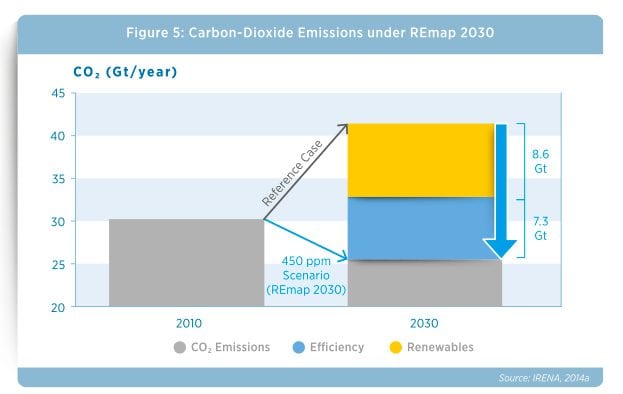In Copenhagen in 2009, the climate talks broke up in virtual disarray. It was clear to all that the major economies were not prepared to come to the table to negotiate an outcome – and one of the major reasons for this was the assumed cost of abatement, and who should bear the brunt of it.
In just six years, so much has changed. It is now clear that the major economies – China and the US in particular, but also India, Brazil and other emerging economies – are ready to come to the table, inspired not just by the need to address crippling and dangerous smog, but also by the plunging cost of renewable energy.
Since Copenhagen, wind and solar – according to a report last week from US investment bank Lazard – have fallen in price by 60 per cent and 80 per cent respectively. Suddenly, addressing climate change does not seem quite so hard or quite so expensive.
Most reports suggest that replacing fossil fuels with renewable energy will end up saving money, although that is not to play down the fierce resistance of the fossil fuel industry, or the complexities of changing the world’s energy system.
In its analysis earlier this year, the International Energy Agency said that wind and solar, and energy efficiency, will account for more than two-thirds of abatement needed to meet the 2°C targets.
Its official policy is an “all of the above” technology approach, but in reality it believes that nuclear (8 per cent) and carbon capture and storage (11 per cent) will play only minor roles, if they can manage their costs.
In a new report, the International Renewable Energy Agency goes further than the IEA. It says that if the world sourced 36 per cent of its demand from renewable energy by 2030, this would result in half of all emission reductions needed to maintain the 2°C pathway. Energy efficiency measures could supply the rest.
“Transitioning rapidly to a future fuelled by renewable energy, accompanied by increasing energy efficiency, is the most effective way to limit global temperature rise,” says IRENA director-general Adnan Amin.
“It is now not a question of if the world ultimately transitions to a renewable energy future, but rather whether it will do so quickly enough.
“At the upcoming climate talks in Paris, it will be up to countries to commit to strong targets, and in turn, give a strong political signal to catalyse further investments in renewable energy.”
IRENA suggests that the share of renewable energy in the world’s electricity system needs to double by 2030 to 36 per cent – most of this new investment (70 per cent) will be in solar and wind energy, but also in bioenergy, geothermal, some hydro and even some ocean energy.
IRENA says that under current policies, the amount of global energy-related CO2 emissions will actually increase from 30.3 Gt/year in 2010 to about 41.4 Gt/year by 2030 (Figure 5).
But doubling the amount to 36 per cent renewables would mean much less coal, oil and gas generation, and would save 8.6GT/year by 2030. Energy efficiency would save a further 7.3GT/year.
The suggestion of a 36 per cent renewable energy target from IRENA is not new. When it did its modelling earlier this year, it suggested that renewable energy rich countries, such as Australia, could and should aim for at least 50 per cent renewable energy by 2030.
The pace of change in the renewable energy space has been the subject of intense discussion in political and industry circles. Earlier this month, the Australian Energy Market Operator revealed it has based its network planning on high-penetration of renewables, as well as strong uptake of battery storage and electric vehicles.
The Greens have outlined plans to go to 90 per cent renewable energy by 2030. If this sounds outlandish, California – a much bigger economy – has a plan to go 70 per cent renewable energy by the same date. Germany plans a minimum 60 per cent.
IRENA, in its report, says that the transition to a sustainable energy future by 2030 is both technically feasible and economically viable, thanks to the sharp falls in the cost of renewables, and solar and wind in particular.
“Renewables are a viable, affordable and scalable solution. They are at the core of any strategy to meet climate goals while supporting economic growth, welfare, domestic value creation and employment generation. The potential of renewables is there for every country to harness.”
Top of IRENA’s recommendations is the need for policy certainty. This underpins the Greens proposal released on Sunday, seeking a mechanism that can provide that certainty.












